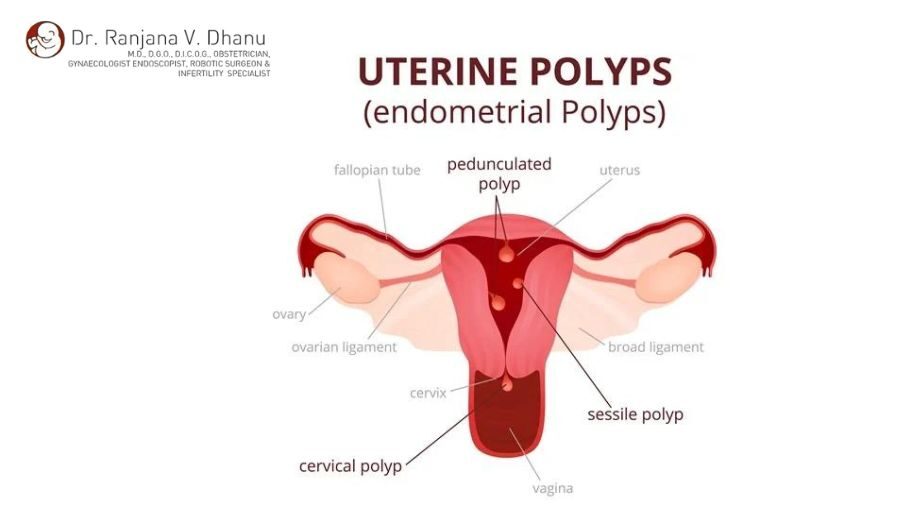Endometrial polyps, also known as uterine polyps, are noncancerous growths that develop within the lining of the uterus (endometrium). While they are often harmless, endometrial polyps can lead to various symptoms and, in some cases, affect a woman’s fertility. This article aims to provide an overview of the causes, symptoms, and treatment options available for endometrial polyps.
Causes of Endometrial Polyps:
The exact cause of endometrial polyps is not fully understood. However, several factors have been associated with their development, including hormonal imbalances, chronic inflammation of the uterus, and estrogen dominance. Estrogen, a hormone that stimulates the growth of the uterine lining, is believed to play a significant role in their formation.
Symptoms of Endometrial Polyps:
Endometrial polyps can present with a variety of symptoms, although some women may remain asymptomatic. Common signs and symptoms include:
- Abnormal uterine bleeding: This can include irregular menstrual periods, heavy or prolonged menstrual bleeding, bleeding between periods, or postmenopausal bleeding.
- Pelvic pain or discomfort: Some women may experience pain during sexual intercourse or chronic pelvic pain.
- Infertility or difficulty conceiving: Endometrial polyps can interfere with the implantation of a fertilized egg, leading to fertility issues.
It is important to note that these symptoms may overlap with other gynecological conditions, such as fibroids or endometriosis. Therefore, it is crucial to consult a healthcare professional for an accurate diagnosis.
Diagnosis method of Endometrial Polyps:
If endometrial polyps are suspected, a healthcare provider will perform a thorough evaluation to confirm the diagnosis. Diagnostic methods commonly used include:
- Transvaginal ultrasound: This imaging technique uses sound waves to visualize the uterus and identify any polyps or abnormalities.
- Hysteroscopy: A thin, flexible tube with a camera (hysteroscope) is inserted into the uterus to directly visualize the polyps and obtain tissue samples for biopsy.
Treatment options for endometrial polyps include:
Once a diagnosis is confirmed, the appropriate treatment plan can be determined based on the woman’s symptoms, age, desire for fertility, and the size and number of polyps.
- Watchful waiting: In cases where polyps are small, asymptomatic, and not affecting fertility, a healthcare provider may recommend close monitoring without immediate intervention.
- Medications: Hormonal medications, such as oral contraceptives or progestins, may be prescribed to regulate the menstrual cycle and reduce the growth of polyps.
- Polypectomy: This minimally invasive procedure involves the removal of the polyps through a hysteroscope. It can be performed in an outpatient setting and allows for both diagnosis and treatment.
- Hysterectomy: In severe cases or when fertility is no longer desired, the surgical removal of the uterus may be considered.
Conclusion:
Endometrial polyps are common growths within the uterus that can lead to various symptoms and fertility issues. While their exact cause is not fully understood, hormonal imbalances and chronic inflammation are believed to play a role. If you experience abnormal uterine bleeding, pelvic pain, or infertility, it is essential to consult a healthcare professional for an accurate diagnosis and appropriate treatment. With timely intervention, most women with endometrial polyps can find relief from their symptoms and improve their overall reproductive health.



